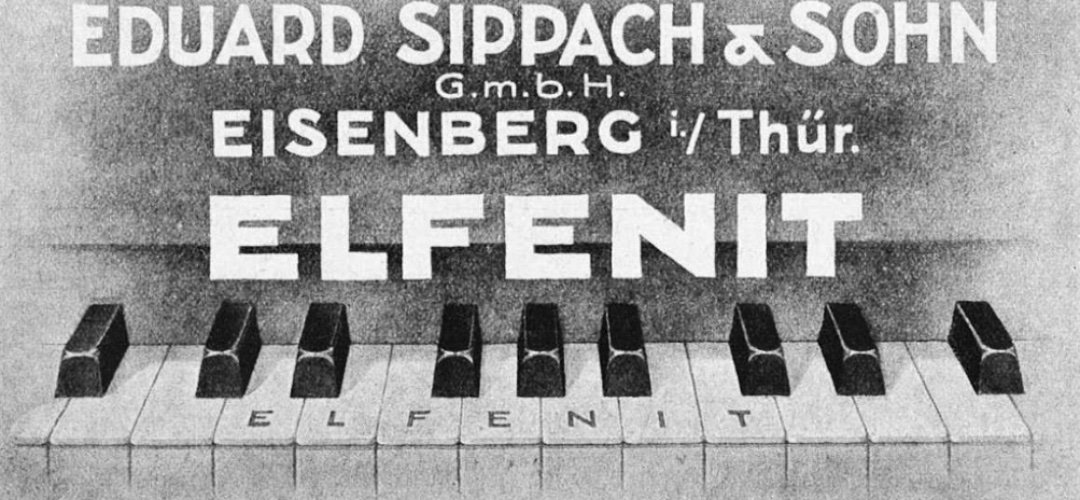On old pianos, the keyboard covering of the white keys is mostly ivory until about 1910. The black key tops are often made of ebony. Only a few people know that in the heyday of piano manufacturing around 1900, it is estimated that well over 50,000 elephants were also killed annually for ivory for piano and grand piano keyboards. Details about this, including the stricter EU rules for pianos with ivory key surfaces since 19.01.2022, can be found in our article 'Ivorykeys on pianos'.
Occasionally, other materials were used for white piano key coverings, e.g. bone - however, this is not always easy to identify even for connoisseurs. At that time, pianos of average manufacturers used new synthetic materials such as Elfenit, Argolit or Clavoid (all brand names of manufacturers at that time), which were supposed to be more durable than ivory. Quite the opposite - after a few years, these mostly dried out and cracks, detachments as well as strong discolorations formed (see example photo). Such keyboards cannot be cleaned properly and usually require a lot of hours to get new coverings. It was not until the 1920s that plastics were used for piano keys, which lasted for decades with good care.

